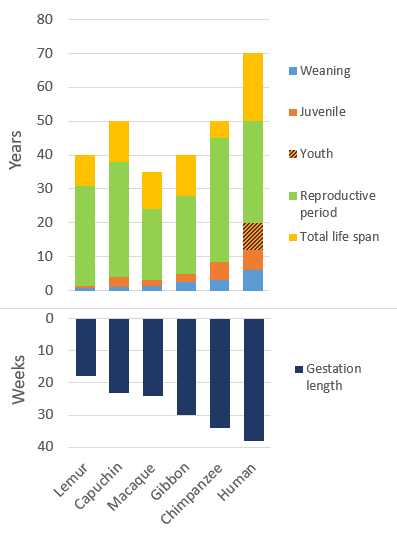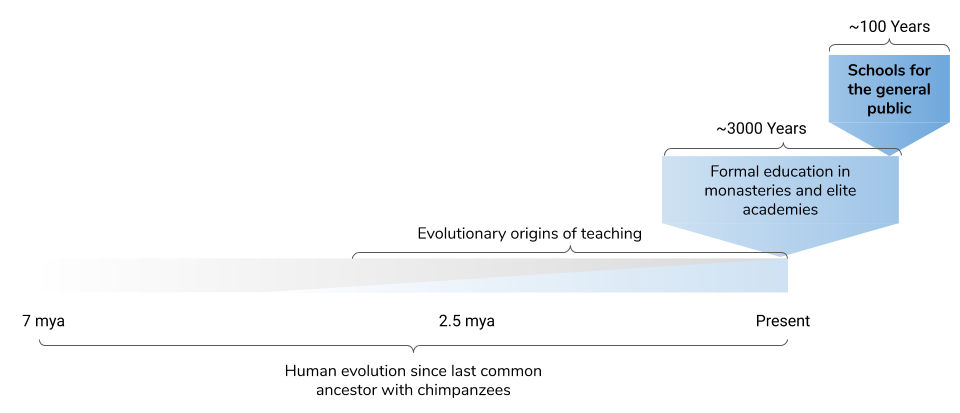Education
The high ability for social learning is one of the characteristics that sets us apart from other species. Learning from each other and teaching each other things are behaviors that make us human. Our species also has a long childhood and youth compared to other primates, apparently because more and more vital knowledge and skills have to be acquired through social learning during development.
As a result, we humans are highly flexible as a species, adaptable to different habitats through technologies and cultural knowledge, and today we inhabit virtually all regions of the world. Because children have to learn over a long period of time and are dependent on the adults around them, we humans also have a division of labor in the care and education of offspring – not just parents but many other people in the group participate in it.

Compared to other primates, we humans have a very long childhood and adolescence. Source: adapted from Zimmerman, E. & Radespiel, E. (2007). Primate Life Histories. In: Henke, W., Tattersall, I., & Hardt, T. Handbook of Paleoanthropology. Berlin: Springer. S. 1166.

For most of human history, people have learned from each other in their groups, largely within the context of everyday life. Formal educational institutions (e.g. schools and universities) have emerged only very recently by comparison.
Probably the recording of language through writing and printing was a major factor requiring formal education – because even the ability for reading and writing must first be learned and explicitly taught. Books, on the other hand, made the passing on of cultural knowledge easier and more efficient. Education in monasteries and elite academies already existed in various regions of the world some 3,000 years ago. Public education for the general population was introduced in the 16th and 19th centuries in Europe and parts of Asia. In the 19th century, education spread throughout the world, driven by colonization and industrialization.
According to some estimates, by 1800 only 10% of the world’s population could read and write. In 2014 it was about 85%.
People also spend more and more time with education. So the extension of the childhood and youth period seems to continue.
Yet, many people in the world do not have adequate access to sufficient and high quality education. This lack of education affects their abilities to improve their economic, political, and social situation.
The Goal 4 of the Global Sustainable Development Goals is to ensure inclusive, equitable and quality education and to promote lifelong learning opportunities for all.
How will or how should the education of the future look like?
How can we ensure that all people in the world have access to good education?
How can we enable all people to become lifelong learners, beyond their formal school years?
What impact can and will education have on the future evolution of our species?
More information on education:

